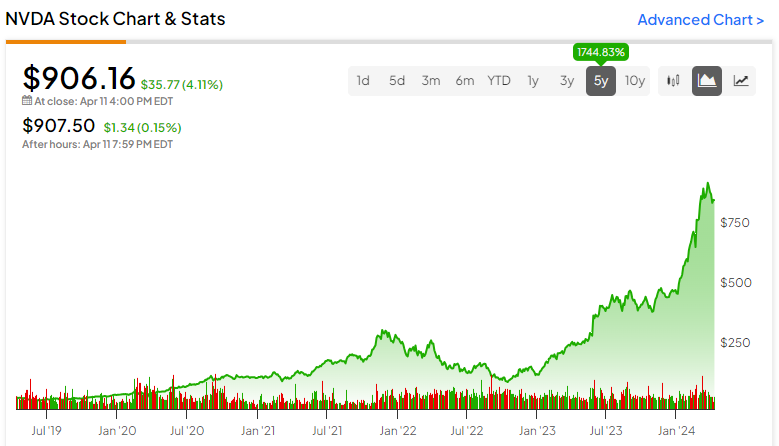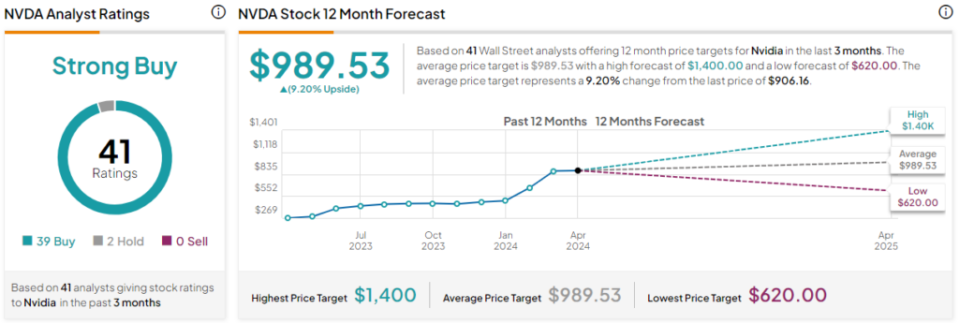Nvidia (NASDAQ:NVDA) develops semiconductors that are used in everything from AI to gaming to crypto mining. The company also owns Cuda, an AI training software. I’m bearish on Nvidia, which trades at 76 times earnings and probably highest profit margins. I believe the company is more cyclical than most people think.
Nvidia, like Tesla (NASDAQ:TSLA) in electric vehicles enjoys a first-mover advantage in AI. The problem is that, like Tesla, competition in electric vehicles has increased exponentially and the company is cyclical and prone to recession.

A great company, but more cyclical than you think
Nvidia is undoubtedly a revolutionary company. The AI language models it powers are changing the world. Search has become faster and easier than ever before, and AI isn’t going to stop there, with many more use cases on the horizon.
However, much of that revolution is now embedded in Nvidia’s financials, with net income rising from $4.37 billion at year-end 2023 to $29.76 billion at year-end 2024. That’s a huge increase.
Nvidia and the AI revolution look comparable to Intel (NASDAQ:INTC) in the Internet revolution of the late 1990s. I recently reviewed Intel’s financials from 1993 to 2000, the period marked by the emergence of the Internet. Intel’s net profit grew significantly slower than Nvidia’s.
It took seven years for Intel’s net income to increase 360%, compared to one year for Nvidia’s net income to increase 581%. During the 2001 recession, when the Internet bubble collapsed, Intel’s net income fell 88% between year-end 2000 and year-end 2001.
I suspect that Nvidia’s earnings will be no less cyclical than Intel’s. Nevertheless, the market is pricing in a never-ending upward trend in corporate profits. The fact that Nvidia’s net income has grown so quickly means there’s less growth ahead, not more. If Nvidia’s customers suffer from a recession, as I believe they will, Nvidia will also suffer from diminishing returns.
In Nvidia’s annual report, the company explained these risks by saying: “Because most of our sales are based on orders, our customers may generally cancel, modify or delay product purchase commitments without notice and without penalty.”
The competition is coming
Nvidia’s operating margin is at a record high of 54%, but if we look at the company’s history, the average operating margin is closer to just 20%. In a cyclical industry like chip design, this is a warning sign. This means profits could fall by more than 50%, only to return to normal. In recessions, things can get even worse. Nvidia’s operating margin approached low single digits during the 2003 recession and turned negative in 2009.
There are two reasons why Nvidia’s margins could shrink. One of them is the aforementioned economic weakness that could impact Nvidia’s customers. Secondly, the competition is now increasing from everywhere, including from Nvidia’s own customers.
This risk was outlined in Nvidia’s annual report, which stated: “Our partners or customers may develop their own solutions; Our customers may purchase products from our competitors. and our partners may stop selling or lose market share in the markets for which they purchase our products.”
All the semiconductor investment we’re seeing, driven by AI hype and government support, is bad news for Nvidia. Big tech companies spend billions on in-house solutions, Advanced Micro Devices (NASDAQ:AMD) and Intel are trying to catch up, and China is trying to become independent of semiconductor technology.
I hate industries where there is a lot of investment and increased competition because that is usually bad for future profit margins. Nvidia spent years developing AI solutions in a sleepy market, but that has now changed. AI is the hottest market out there, and new competitors are spending huge amounts of money on research and development. For this reason, I cannot be sure who will be ahead in terms of technology in 10 years. Just like Intel, Nvidia could easily lose its lead over the years.
The valuation of NVDA stock is extreme
Although net income and margins exploded, Nvidia now trades at 76 times earnings, 36 times sales, and 51 times book value. Typically, you can tell the market is pricing in a company’s approach to a cyclical peak when earnings rise 581% year-over-year by setting lower multiples. However, this is certainly not the case with Nvidia.
Is NVDA Stock a Buy According to Analysts?
Currently, 39 out of 41 NVDA analysts rate the company a “Buy,” two rate it a “Hold,” and zero analysts rate it a “Sell,” resulting in a “Strong Buy” consensus rating. The average price target for Nvidia shares is $989.53, implying an upside potential of 9.2%. Analyst price targets range from a low of $620 per share to a high of $1,400 per share.


The bottom line on NVDA stock
I believe Nvidia is comparable to Intel at the height of the dotcom bubble. Intel benefited from the Internet boom and became a leader in semiconductors for PCs and technologies for Wi-Fi. But as competition increased, overinvestment became rampant and demand fell, Intel’s shares and profits collapsed along with those of other dot-com names.
The same thing could happen to Nvidia as semiconductor investment has surged in major tech countries and China. With earnings up 581% year-over-year, Nvidia’s profits could be nearing an all-time high. The next recession could spell the end, as orders for Nvidia products can be quickly canceled due to an industry downturn, widespread recession, or substitution with products from another company.
Disclosure
